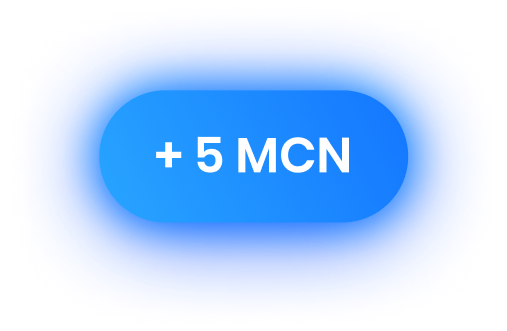Theatrical artwork
Different conflicts also reappear from multiple points in time throughout the exhibition, whether as rarely-seen historical images or recent photographic installations. The Second World War for example is addressed in Jerzy Lewczyński’s 1960 photographs of the Wolf’s Lair / Adolf Hitler’s War Headquarters, Shomei Tomatsu’s images of objects found in Nagasaki, Kikuji Kawada’s epic project The Map made in Hiroshima in the 1960s, Michael Schmidt’s Berlin streetscapes from 1980, and Nick Waplington’s 1993 close-ups of cell walls from a Prisoner of War camp in Wales https://voltagebets.com/sports-betting/.
“The original idea for the Tate Modern exhibition Conflict, Time, Photography came from a coincidence between two books that have captivated and inspired me for many years: Kurt Vonnegut‘s classic 1969 novel Slaughterhouse-Five and the Japanese photographer Kikuji Kawada’s 1965 photobook The Map. Both look back to hugely significant and controversial incidents from the Second World War from similar distances.
Conflicts from around the world and across the modern era are depicted, revealing the impact of war days, weeks, months and years after the fact. The works are ordered according to how long after the event they were created: images taken weeks after the end of the American Civil War are hung alongside those taken weeks after the atomic bombs fell on Japan in 1945. Photographs from Nicaragua taken 25 years after the revolution are grouped with those taken in Vietnam 25 years after the fall of Saigon. The exhibition concludes with new and recent projects by British, German, Polish and Syrian photographers which reflect on the First World War a century after it began.
Film graphic
Film students are often tasked with making degree-worthy films on shoestring (read: non-existent) budgets, but can always be depended upon to shoot for the stars — meaning they’re going to blow their entire budget on someone’s talented actor of an uncle and be unable to pay for crew.
You’ll get to see and hear prominent graphic design artists such as Massimo Vignelli, Matthew Carter, Michael Beirut, Danny van den Dungen, and more talk about Helvetica and typography in general. This is not a movie to be missed.
Perhaps the toppest of the tips is to be honest. It’s the curse of being a designer — we make designs, especially on our lives. No matter how prepared, graphic design for film is itself designed to overwhelm you with all that needs doing, so you are definitely better having the fall back of this being your first, second, third job rather than being caught in the lie that you are not in fact the lesser known student of the infamous Jeffery Collage (“yes, that Collage.”).
Graphic design in movies is not only used to make stunning posters, or the setting pretty and realistic, it is used to tell a story through design. For example, the way a signboard on a shop is created, the lettering on traffic signals, the ads on a moving bus, all of it are designed in a way that immediately tells the audience where (location) the story is taking place and when (the time period).
The best way to demonstrate this is to start feeling your way through your own projects. Once you prove to yourself that you know at least 60% what you’re doing, you can 60% convince someone else you know, and they’ll know about 25% of what’s involved, so to them you’ll seem overqualified, and meanwhile you can figure out the remaining 40% as you go, when it’s too late for them to stop you.
Here is a really ace video about reaching out, and I’ll touch more upon my advice for talking to people in a later post. Just remember: people are busy, so brevity is key! Once you’ve got your foot in the door people will trust you and hire you, but before this you might need to offer your work for free in the form of work experience (alas, the world of creatives). You can also follow them on Instagram (again, if their profile is open and clearly slightly work-related, otherwise it’s probably a bit odd following pics of their dinner).

Cinematic artwork
Sophia Coppola chooses to portray her subject as a naive young woman, ignorant of the growing resentment and revolution that eventually destroyed her. The young queen, as played by Kirsten Dunst, is thrust into a life she was wholly unprepared for.
A Sunday Afternoon on the Island of La Grande Jatte also stands as one of the earliest representations of leisure, especially within public spaces. This remains, after all, the essence of Ferris Bueller and his unforgettable day off…
Finally, Wes Craven’s ‘Scream’ finds its iconic mask in Edvard Munch’s ‘The Scream’. The movie’s memorable mask is a direct descendant of Munch’s agonized figure, turning a painting into a pop culture phenomenon.
This conversation is of course reflected in the painting before them, as Q takes on the role of Bond’s new Quartermaster. The technological advances he represents are synonymous with the forces that take down the “great old warship, being ignominiously hauled away for scrap.” Once again, the art in the movie is not only serving a decorative purpose, but actually contributing to themes in the plot.
Stanley Kubrick’s ‘A Clockwork Orange’ owes its swirling chaos to Vincent van Gogh’s ‘Prisoners’ Round’. The painting’s tumultuous brushstrokes echo through the movie, creating a visual representation of the film’s own whirlwind of disorder.

.png)

